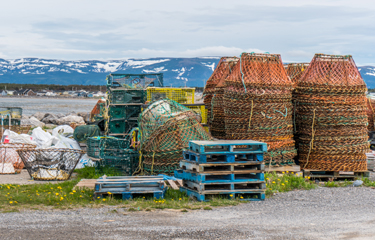The snow crab fishery in the Canadian province of Newfoundland and Labrador initially expected a banner year for fishing and prices, but a sudden change in the market has left fishermen and processing companies alike reeling.
The fishery got off to a rocky start in April, when the Fish Food and Allied Workers (FFAW) Union, which represents fishermen in Newfoundland and Labrador and the Association of Seafood Producers (ASP) – a nonprofit group representing seafood producers in the same area – clashed over what the fishermen would be paid for their catch. A multi-week fight over the price ended with the FFAW losing out on its CAD 9.05 (USD 6.96, EUR 6.71) per pound request, and the ASP won its price request of CAD 7.60 (USD 5.85, EUR 5.63).
Initial optimism the season would prove to be a lucrative one quickly waned as snow crab prices began to drop soon after the price was set, leading to the ASP declaring that it was “compelled to respond” to increasing market uncertainty by successfully requesting a downward price adjustment in mid-May. ASP Executive Director Derek Butler said in late May the market “simply is not operating as usual,” and that some processors would have to consider limiting their operations.
As of mid-June, millions of pounds of quote-eligible crab remain uncaught. The province's snow crab harvesters are now “deeply frustrated and fatigued” by mismanagement of the fishery, according to FFAW.
“Trip limits and scheduling imposed by processing companies this season have been far in excess of what any harvester would consider reasonable or just,” FFAW President Keith Sullivan said in a release. “While most plants remain open at the present time, any plants shuttering operations while there is remaining quota left to harvest is deeply concerning.”
Canada's Department of Fisheries and Oceans released its management plan for the snow crab fishery in April with an overall increase in total allowable catch of 32 percent – representing a 25-million-pound increase. However, that increase has compounded with previous increases over the past three years to result in a processing bottlenecks, according to Sullivan.
“It’s a simple fact that there is not enough processing capacity to support the current snow crab fishery in our province,” he said. “This year’s quota of 110 million pounds is a far cry from the 52 million it was just three years ago. Adding additional processing capacity for snow crab will not take away any current processing jobs – it will create new jobs for people in our rural communities and ease significant constraints experienced by harvesters.”
Sullivan criticized a lack of transparency on behalf of crab processors and a lack of action by Newfoundland and Labrador Fishery Minister Derrick Bragg and the province's minister of labor, Bernard Davis.
“It is a privileged position to hold a processing license in Newfoundland and Labrador. It is abundantly clear that something must be done by our government if these companies are refusing to operate while the fishery remains open,” Sullivan said.
The FFAW said it is asking for six different actions, including the issuance of more crab-processing license to companies that do not already hold licenses, legislation to cap the growth of the five largest processing companies to their current levels, an amendment to the Fishing Industry Collective Bargaining Act to include a second price reconsideration, allowing prices to be adjusted “in line with the market,” and a separate amendment to the act to require increased transparency and information-sharing by the processing sector. FFAW is also requesting outside buyers be allowed into the fishery to increase competition, and increased enforcement by the provincial government to prevent “the illegal control of inshore fishing licenses.”
Even with more licenses and processing capacity, it’s unclear where additional crab would go. Snow crab prices, according to a recent newsletter published by industry veteran and consultant Les Hodges, are meeting “strong headwinds.”
“Major U.S. customers are reluctant to buy as they are still holding significant amounts of expensive 2021 inventory and Japan[ese] buyers have options on Russian snow crab. This has resulted in new-season Canadian snow crab arriving to lackluster demand and falling prices,” Hodges said.
It isn’t just the snow crab market that’s being affected by the price drops. Portland, Maine, U.S.A.-based Cozy Harbor Co-Founder and President John Norton told SeafoodSource in early June prices for lobster have fallen along with those for snow crab, resulting in a steep drop-off in lobster prices.
According to the FFAW, even with the difficulties, processors have resumed buying crab.
“We’ve actually been told this afternoon that the two plants that had temporarily stopped buying have resumed buying again, so as far as we know all plants are currently operational,” FFAW Communications Director Courtney Globe told SeafoodSource on 15 June. “Thus far in the season, the processors threats have not materialized, so we’re hopeful that snow crab harvesters will be able to catch their remaining quota without the added stress this uncertainty causes.”
Even so, harvesters will be getting less money per pound of crab as of 12 June – the current price, according to the FFAW, is CAD 6.15 (USD 4.74, EUR 4.55) compared to the CAD 7.53 (USD 5.81, EUR 5.57) earned at the same time last year.
Photo courtesy of Mary Anne Love/Shutterstock







